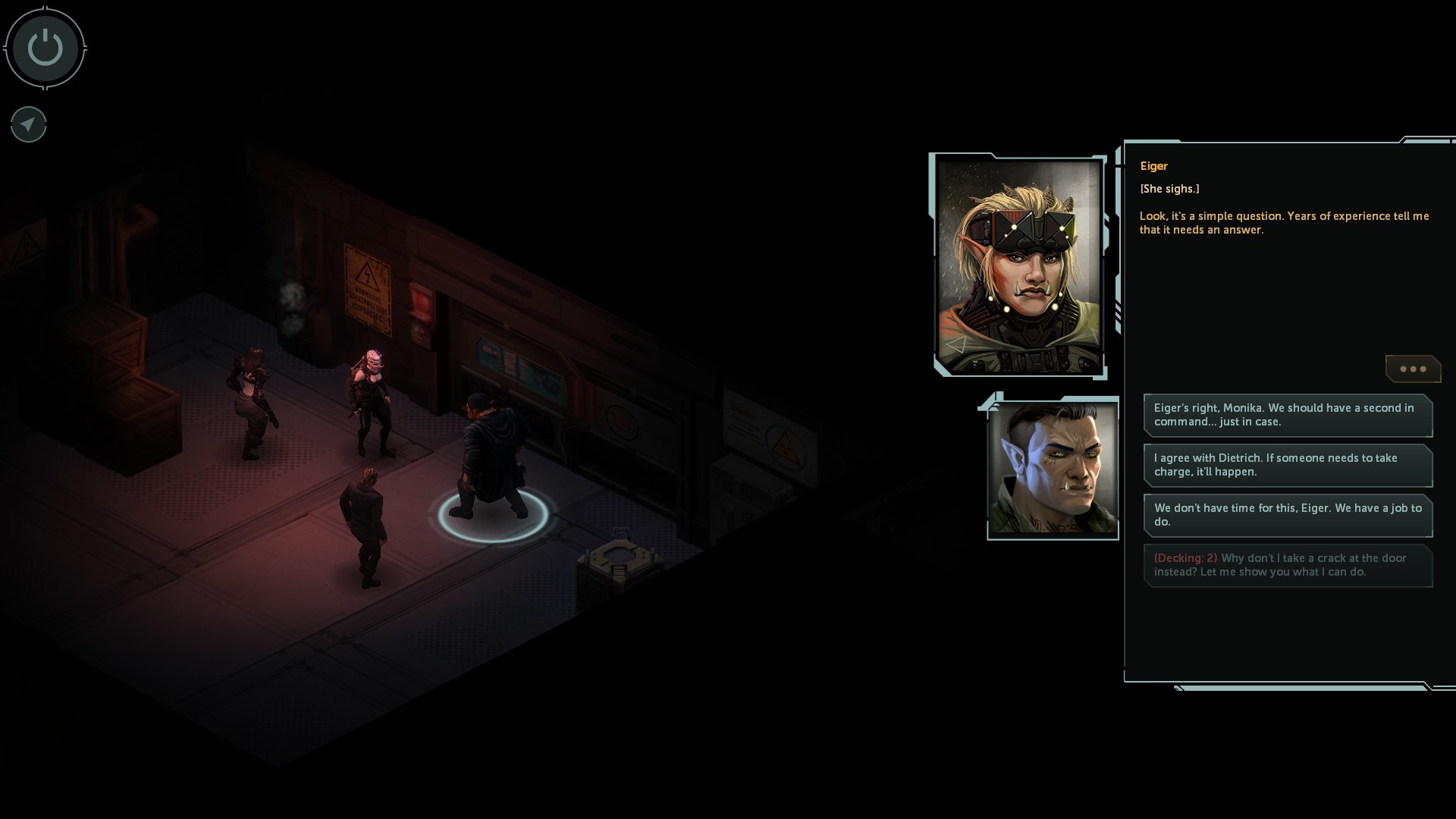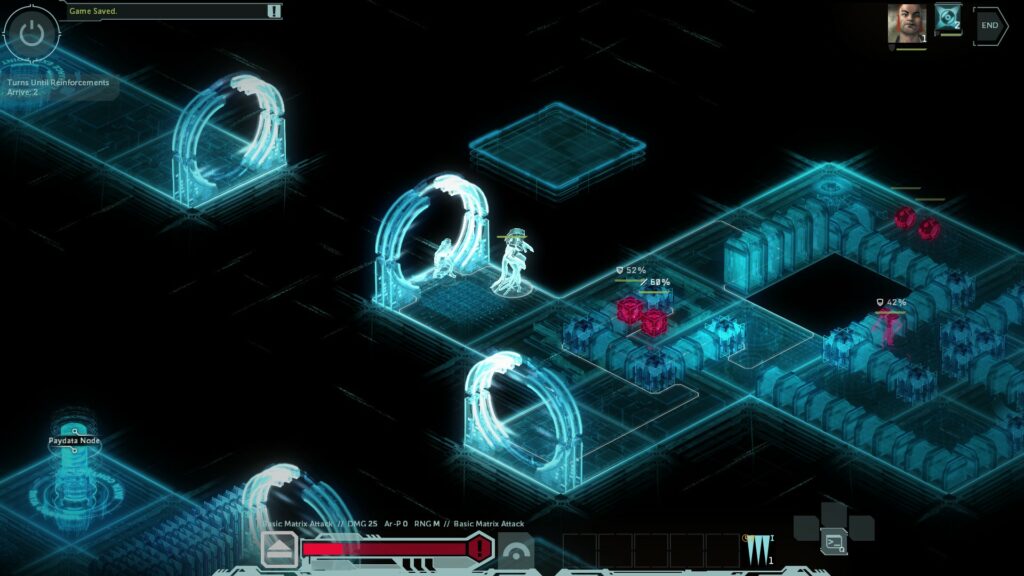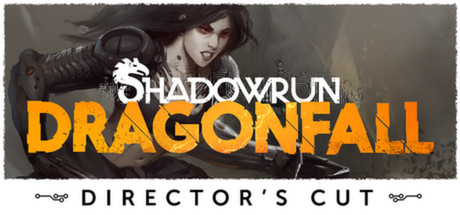The subtle differences in Shadowrun: Dragonfall – Director’s Cut make it feel as if you are still playing the same game as the first one, albeit with better features.
Type: Single-player
Genre: Turn Based -Strategy
Developer: Harebrained Schemes
Publisher: Paradox Interactive
Release date: 18 Sep, 2014


Intro
Shadowrun: Dragonfall – Director’s Cut is the second part of the Shadowrun trilogy, featuring a different setting, story, and characters from the first part. It’s still offering the same turn-based strategy gameplay as its predecessor, Shadowrun: Returns (our review), with some improvements. Due to the number of similarities, this review will focus on mentioning the differences, although I’ll still try to explain the general mechanics.
Visuals
The game still has the same cyberpunk feel with improved visuals. Towns filled with neon lights, coupled with high-tech pieces of machinery filling the buildings are what surrounds you as you play. Unlike its predecessor, this game doesn’t fail to capture the fantasy elements – there is one rural area that looks out of touch from the rest, filled with woods and bricks to make it looks more natural.
Story
The story feels weak to me. While Shadowrun: Returns focuses more on the plot and its premise, Shadowrun: Dragonfall – Director’s Cut focuses more on character interaction and decision making. Most dialogues will require you to choose between certain options, each resulting in a different outcome. While I liked the variety, it also makes the story loses its charm. I didn’t feel as immersed as I was and ended up focusing more on satisfying my curiosity about what will happen if I chose a different option. Moreover, the dialogues also feel shallow most of the time, giving you no reason to focus on them.
Despite the story having 5 endings, most of them are similar. There are only 2 endings that look different – the others were only different in a few paragraphs in the epilogue. Besides, some of these are also affected by your choice throughout the game and I don’t feel like retrying the game just to see the difference.
The Game
Gameplay
If you felt that Shadowrun: Returns‘ gameplay was too weak, you’ll be surprised with what Shadowrun: Dragonfall – Director’s Cut has to offer. It still offers the same gameplay as the previous one – you still can design your character, assign your stat, and buy some gears for the missions, albeit with some minor tweaks. Since the game revolves around missions, the visual novel-length dialogue doesn’t become dominant in this game – you’ll do a lot of actions as you do missions, which lead to the next good thing.
You can do missions in any way that you want. One of the main features that this game has to offer is the freedom to make a decision, and everything matters. The choices that you make varies in each mission, which can give you different rewards or allow you to skip some battles. You can’t just choose any option that you want though. Some decisions are hidden beneath some requirements, mostly in the form of stat points, which can give you an advantage if you build your character in a certain way.

Characters are more balanced. There wasn’t any reason to do a decker build in the first game because you hardly go to the matrix. Deckers are similar to hackers in Shadowrun world, in a sense that they can project themselves in cyberspace, or matrix as the game calls it, and bypass security systems. Moreover, there will also be more variations in spells and tokens sold in the shops as you progress the game, unlike the first game who only has guns and a few spell upgrades.
In addition to hiring mercenaries in missions, you also can “hire” teammates for free. You can recruit up to four teammates and bring three of them to missions. This gives you more freedom in building your character, allowing you to bring teammates that are more suitable for your build. You also can assign their upgrades in a simpler way than your character and unlock additional abilities if you do certain things. The fact that you can talk to them after each mission also makes you feel more attached to them, especially since after knowing about their past and concerns.

Combat
Combat is played like usual turn-based strategy games, in which you can assign characters to move and attack within the tiles. It’s still similar to the first game with some noticeable improvements. It states whether you or your enemies are covering themselves behind an object or out in the open, receiving more damage in the latter case. Enemies that stay in cover also can be forced out of their hiding by attacking them from close range. This gives more reason to have a melee-based character in your party. Moreover, skills are also more varied, allowing you to try different strategies in combat.
The game’s shifted focus to combat also allow me to realize things that I didn’t notice in the first game. I didn’t know that different guns have different accuracy – although it’s obvious, sniper rifle has low accuracy in close-range, and the opposite works for pistols. Moreover, there are ways to increase accuracy, and surprisingly, you still can get a good chance to land a hit on your enemy within the 60% range.

Length and Difficulty
I finished the game in 34.6h after spending my time loading my last save and experiencing all endings. The game still offers 4 difficulties, and I played the easiest one. There is an increase in difficulty compared to the first game – I had to use items if I tried to rush things, which happens in my second run when I was aiming for the one achievement. I also need to retry some fights and decisions because of the difficulty. Some of them are too difficult to manage if I played the game in a certain way.
Problems
You can’t undo your moves in battle – there were a lot of times when I moved a character by accident. Lastly, there is an issue in the game’s performance when you have a lot of saves. My game was unresponsive several times and loading times get slower after 100+ saves. I had to disable cloud saves and deleted my save files to solve the issue.
Specs
Intel Core i5-9300H 2.40GHz, 8GB RAM, NVIDIA GeForce GTX 1650
Verdict
The subtle differences in Shadowrun: Dragonfall – Director’s Cut make it feel as if you are still playing the same game as the first one, albeit with better features. I liked how they tried to balance all builds to encourage you to try everything, and the tweaks on the interface help to recognize some features. Despite me liking the story in the first game more due to its focus, the current style works better to improve more on the gameplay, which is lacking in the first one. Besides, I liked that you can choose different ways to finish missions based on your decisions. All in all, it is a nice game to play, and I can recommend it to turn-based strategy and roleplay fans more than before.










